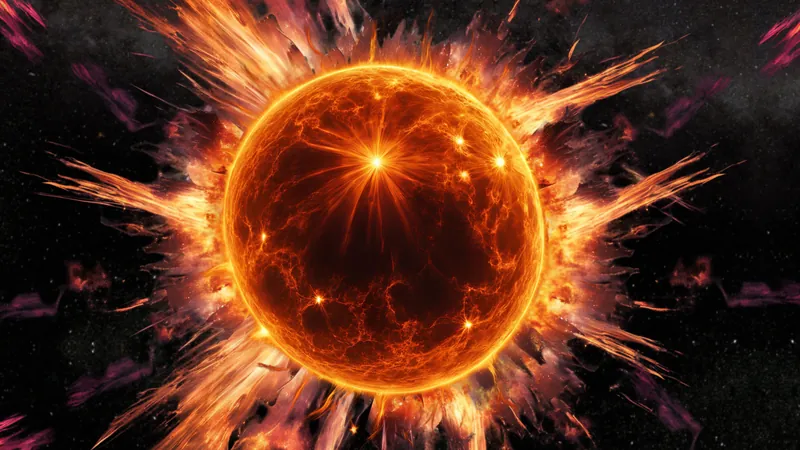
Groundbreaking Discovery: Astronomers Witness Black Hole Jets Forming in Real Time!
2025-01-17
Author: Siti
Groundbreaking Discovery: Astronomers Witness Black Hole Jets Forming in Real Time!
In an astonishing breakthrough, astronomers have observed black hole jets forming in real time—an event previously thought to be impossible. The international team of scientists focused their attention on a galaxy known as 1ES 1927+654, located about 270 million light-years from Earth in the constellation Draco. This galaxy is classified as an 'active galactic nucleus,' indicating the presence of a highly active black hole at its center.
The black hole had been relatively low-key, accruing material at a slow rate until suddenly in 2018, it captured the scientific community's attention. The black hole's activity surged significantly, consuming material at an unprecedented pace and becoming over 100 times brighter in the visible light spectrum within just a few months. Such rapid changes in activity were previously believed to take thousands or even millions of years.
Following this remarkable increase, astronomers kept a close watch on 1ES 1927+654 for further intriguing phenomena. After a quiet period during 2020, the black hole took the astronomical world by storm again in 2023, this time emitting radio waves at an intensity that was 60 times stronger than before—a behavior never before monitored in real time for a supermassive black hole.
Utilizing advanced imaging techniques such as Very Long Baseline Interferometry (VLBI), scientists captured some of the highest-resolution images of radio frequency emissions, revealing the formation of a pair of oppositely-directed plasma jets that began expanding outward in late 2023 and early 2024. This milestone marks the first-ever observation of black hole jets being activated in real time.
The implications of these jets are monumental; they can extend far beyond their host galaxies, potentially influencing star formation rates throughout their cosmic neighborhoods. Understanding how these jets function is crucial for unraveling the grand tapestry of the universe's evolution.
Eileen Meyer, an associate professor of physics at UMBC and leader of the study, shared her enthusiasm: “This is incredible—we have real-time observations of a radio jet ‘turning on’ and can see plasma blobs moving away from the black hole at speeds of 20-30% of the speed of light.
The jets emerging from 1ES 1927+654 are relatively small compared to the massive structures sometimes seen in other powerful active galactic nuclei. Some researchers speculate that the 2018 flare may have resulted from a tidal disruption event, where a massive object like a star ventures too close to the black hole, momentarily brightening it.
Current investigations suggest that the jets in this case belong to a newly recognized category known as 'compact symmetric objects' (CSOs), characterized by their short lifespan compared to the enormous jets that last for millions of years. Meyer posits that these jets might represent a unique single ingestion event of a star or gas cloud, creating a brief flare lasting around 1,000 years.
Despite the groundbreaking findings, many questions remain. Scientists are eager to collaborate with theorists to refine models explaining how black holes generate jets. This discovery not only enhances our understanding of black holes but also adds a fresh chapter to the grand narrative of cosmic evolution.
As we continue to explore the mysteries of the universe, this remarkable observation could lead to even more profound discoveries. Keep watching the stars—who knows what other secrets they may reveal!




 Brasil (PT)
Brasil (PT)
 Canada (EN)
Canada (EN)
 Chile (ES)
Chile (ES)
 Česko (CS)
Česko (CS)
 대한민국 (KO)
대한민국 (KO)
 España (ES)
España (ES)
 France (FR)
France (FR)
 Hong Kong (EN)
Hong Kong (EN)
 Italia (IT)
Italia (IT)
 日本 (JA)
日本 (JA)
 Magyarország (HU)
Magyarország (HU)
 Norge (NO)
Norge (NO)
 Polska (PL)
Polska (PL)
 Schweiz (DE)
Schweiz (DE)
 Singapore (EN)
Singapore (EN)
 Sverige (SV)
Sverige (SV)
 Suomi (FI)
Suomi (FI)
 Türkiye (TR)
Türkiye (TR)
 الإمارات العربية المتحدة (AR)
الإمارات العربية المتحدة (AR)